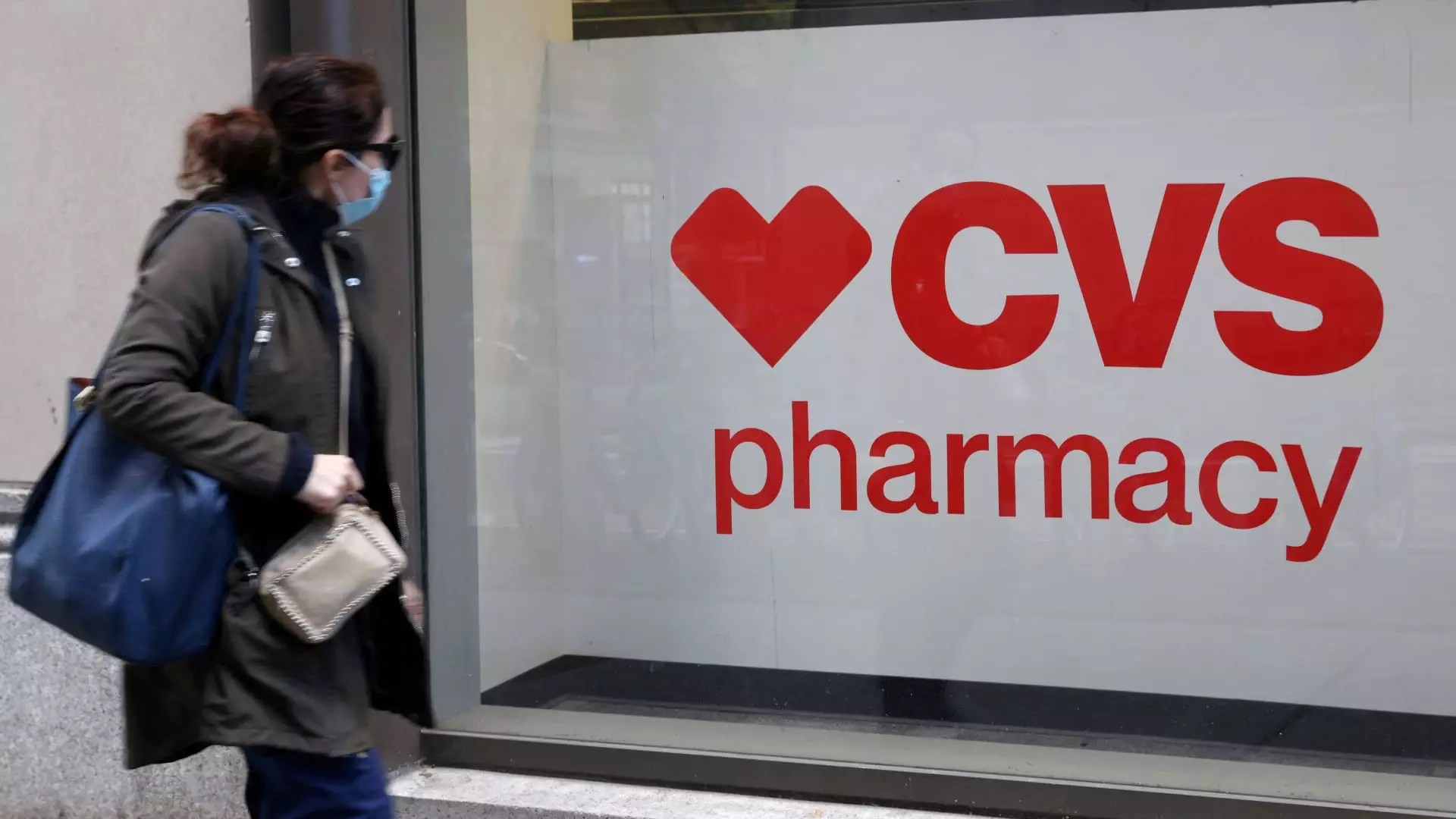CVS Health has found itself navigating turbulent waters in the third quarter, as highlighted in their recent earnings report. The results, which marked a critical moment for newly appointed CEO David Joyner, were characterized by disappointing earnings and affirmations of ongoing challenges with high medical costs. This financial snapshot reveals much about the current state of CVS and the pressing need for strategic revitalization in the face of investor uncertainty and competitive pressures.
CVS reported adjusted earnings per share (EPS) of $1.09, significantly below Wall Street’s expectations of $1.51. This gap reflects broader issues, particularly in its insurance arm, Aetna, where increased medical claims drove costs higher. Despite these earnings falling short of projections, revenue for the quarter reached $95.43 billion—exceeding the forecast of $92.75 billion and marking a 6.3% year-over-year increase. However, the disparity in earnings versus expectations underscores how higher medical expenses are becoming a recurring theme for the company.
As per Joyner’s statement, CVS’s immediate goal is to stabilize its financial performance while also focusing on regaining investor trust: “Establishing credibility and earning the trust of our investors is one of my top priorities as the new leader of CVS Health.” This acknowledgment hints at a broader recognition within CVS about the need for transparent communication and achievable targets in a time of unpredictability.
The market’s sentiment regarding CVS shares has significantly soured in 2023, with stock prices falling nearly 27% due to consistent downgrades in full-year guidance over three quarters. This trend has attracted attention from activist investors, pushing for a turnaround amidst concerns of mismanagement and unsustainable operations. The lack of formal guidance going forward only adds to this climate of uncertainty, as CVS prepares to deliver prospective insights during its upcoming earnings call.
The appointment of Steve Nelson as president of Aetna indicates a strategic pivot as well, with Joyner and Nelson tasked with reinforcing investor faith in the CVS brand and its financial trajectory. The recent leadership changes follow a period marred by poor performance indicators, emphasizing the urgent need for decisive action to restore confidence in CVS Health’s operational stability.
In response to the financial underperformance, CVS is undertaking significant restructuring initiatives, including a strategic review that may lead to substantial layoffs, the closure of hundreds of stores, and an ambitious plan to pare back $2 billion from expenses in the coming years. These actions signal an acute awareness of the need to streamline operations to mitigate losses—a theme mirrored across several healthcare sectors post-pandemic as they adapt to new market dynamics.
CVS’s net income dropped sharply to $71 million from $2.27 billion year-over-year, which speaks volumes to the current pressures on its bottom line from the insurance segment, which saw an alarming increase in its medical benefit ratio. This ratio’s rise indicates that CVS is facing challenges typical of an industry in flux, where the pandemic’s delayed medical procedures are resulting in elevated utilization rates as patients return for necessary treatments.
Joyner attributes CVS’s more pronounced struggles compared to the wider industry to the unique challenges faced by its healthcare services division, particularly Aetna. Medical expenses are soaring as more seniors are undergoing treatments that they deferred during the pandemic. With increasing claims payout impacting profitability, CVS is not alone in grappling with this reality, but its current trajectory raises questions about the viability of its business model without effective intervention.
According to the report, CVS’s health services saw revenue declines, complicating their operational landscape. Moreover, the pharmacy unit’s sales were partially boosted by increased prescription volume, yet faced hurdles from reimbursement pressures and a narrowing retail footprint. The solution lies not only in well-executed cost-cutting measures but in innovative strategies that could help CVS reclaim and expand its market share in an increasingly competitive environment.
As CVS navigates these challenging waters with new leadership, the company must commit to transparent, actionable plans and establish a clear path toward financial recovery. The task ahead is steep—inflating medical costs, sinking stock prices, and the pressure from investors demand decisive action. With a comprehensive strategy that encompasses operational efficiency, customer engagement, and proactive communication with the market, CVS Health may yet find a way to turn its fortunes around and emerge stronger. Prioritizing investor trust and workforce stability will play a critical role in this endeavor, shaping the narrative of CVS Health as it moves forward amid uncertainty in the healthcare landscape.

